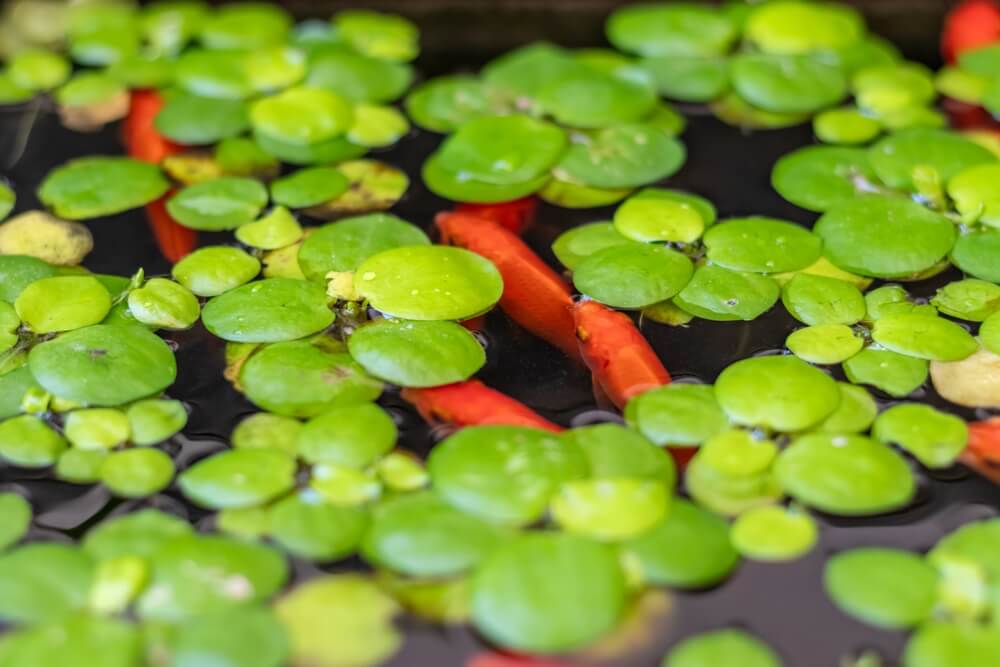Discover the most stunning floater plants to add to your aquarium and create a captivating underwater landscape.
Why choose floater plants for your aquarium?
Floater plants are a fantastic addition to any aquarium. They not only enhance the beauty of the tank but also provide numerous benefits for the overall health and well-being of your aquatic ecosystem. One of the main reasons to choose floater plants is that they help create a natural and balanced environment for your fish and other aquatic creatures. These plants float on the water's surface, providing shade and cover for your fish, which helps reduce stress and promotes a sense of security.
Furthermore, aquarium floater plants play a crucial role in maintaining water quality. They absorb excess nutrients, such as nitrates and phosphates, which can lead to algae growth if left unchecked. By incorporating floater plants into your aquarium, you can effectively combat algae issues and maintain a clean and clear water column. Additionally, these plants release oxygen into the water through their leaves, which is essential for the health and vitality of your fish.
Overall, choosing floater plants for your aquarium is a wise decision that not only adds aesthetic appeal but also contributes to the overall well-being of your aquatic pets.
Benefits of adding floater plants to your aquarium
Adding floater plants to your aquarium offers a multitude of benefits. Firstly, they provide natural filtration by absorbing excess nutrients, which helps prevent algae growth and keeps the water quality in check. This means less maintenance and cleaner water for your aquatic pets.
Secondly, floater plants create a natural and dynamic habitat for your fish. They offer shade and cover, reducing stress levels and providing a sense of security. This is especially beneficial for shy or small fish species that prefer hiding spots.
Additionally, floater plants contribute to the oxygenation of the water. Through the process of photosynthesis, they release oxygen into the aquarium, ensuring a healthy and oxygen-rich environment for your fish to thrive.
Lastly, floater plants add visual appeal to your aquarium. With their vibrant colors and unique shapes, they create a captivating underwater landscape, making your tank a focal point of beauty and tranquility.
In summary, the benefits of adding floater plants to your aquarium are improved water quality, enhanced habitat for fish, increased oxygenation, and aesthetic appeal.
Top 5 floater plants for your aquarium
1. Water Lettuce (Pistia stratiotes): Water Lettuce is a popular choice for aquarium enthusiasts due to its attractive rosette shape and light green leaves. It floats on the water's surface and provides ample shade and cover for your fish. It also helps in absorbing excess nutrients and maintaining water quality.
2. Amazon Frogbit (Limnobium laevigatum): Amazon Frogbit is another excellent floater plant known for its long roots and round leaves. It creates a natural-looking canopy on the water's surface and offers shade and hiding spots for your fish. It is easy to care for and can thrive in various water conditions.
3. Red Root Floater (Phyllanthus fluitans): Red Root Floater is a stunning floating plant with reddish leaves that add a pop of color to your aquarium. It forms dense mats on the water's surface, providing shade, reducing algae growth, and creating a visually appealing display.
4. Salvinia Minima: Salvinia Minima is a small floating plant with vibrant green leaves. It is known for its ability to reproduce quickly, making it an excellent option for covering a large surface area. It helps in nutrient absorption, provides shade, and adds a lush look to your aquarium.
5. Duckweed (Lemna minor): Duckweed is a tiny floating plant that forms a carpet-like covering on the water's surface. It is easy to care for and multiplies rapidly. It provides shade, absorbs excess nutrients, and acts as a natural food source for some fish species.
These are just a few examples of the top floater plants you can consider for your aquarium. Each plant has its unique characteristics, so choose the ones that best suit your tank's requirements and aesthetic preferences.
How to care for floater plants in your aquarium
Caring for floater plants in your aquarium is relatively easy. Here are some essential tips to ensure their well-being:
1. Lighting: Most floater plants prefer moderate to high lighting conditions. Ensure that your aquarium provides sufficient light for their growth. LED lights are a popular choice for aquarium lighting as they are energy-efficient and provide the right spectrum for plant growth.
2. Water Parameters: Floater plants can tolerate a wide range of water parameters, but it is essential to maintain stable conditions. Keep the water temperature between 72-82°F (22-28°C) and maintain a pH level of 6.5-7.5. Regular water testing and monitoring are recommended.
3. Nutrients: Floater plants derive nutrients from the water column, but they also benefit from additional supplementation. You can use liquid fertilizers or root tabs specifically formulated for aquarium plants to provide essential nutrients like nitrogen, phosphorus, and potassium.
4. Water Movement: Gentle water movement is ideal for floater plants as it helps distribute nutrients and prevents stagnation. Consider using a low-flow filter or a gentle air stone to create a slight water ripple.
5. Pruning and Maintenance: Regularly remove any dead or decaying leaves from the floater plants to maintain their health and prevent algae issues. Trim overgrown roots if necessary.
By following these care guidelines, you can ensure that your floater plants thrive in your aquarium and contribute to the overall beauty and well-being of your aquatic ecosystem.
Incorporating floater plants into your aquarium design
Incorporating floater plants into your aquarium design can elevate its visual appeal and create a stunning underwater landscape. Here are some ideas on how to incorporate floater plants effectively:
1. Create a Floating Canopy: Arrange the floater plants in a way that they form a natural-looking canopy on the water's surface. This creates a shaded area for your fish and adds dimension to your tank.
2. Combine with Driftwood or Rocks: Pairing floater plants with driftwood or rocks can create an aesthetically pleasing contrast. The combination of natural elements adds a natural and visually interesting touch to your aquarium.
3. Use Hanging Planters: Consider using hanging planters or floating baskets to showcase your floater plants. This allows you to control their placement and create specific focal points in your tank.
4. Experiment with Colors and Textures: Mix different varieties of floater plants with varying leaf shapes, sizes, and colors to create a visually dynamic and captivating display. Play around with combinations to find the perfect balance.
Remember to regularly trim and maintain the floater plants to prevent overgrowth and maintain the desired aesthetic.
In conclusion, incorporating floater plants into your aquarium design allows you to unleash your creativity and create a visually stunning underwater landscape that not only enhances the beauty of your tank but also provides numerous benefits for your aquatic pets.
Additional Resources:
floating aquarium plants - Comprehensive Guide.





.jpg?width=352&name=Nymphaea+red+tank+(1+of+1).jpg)
Leave a Comment